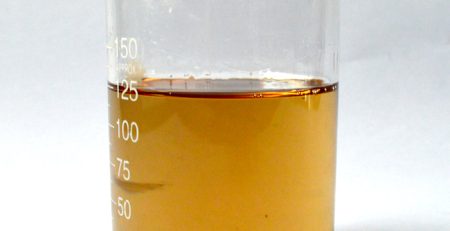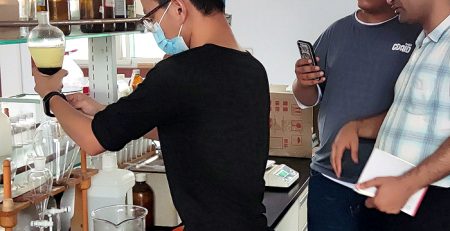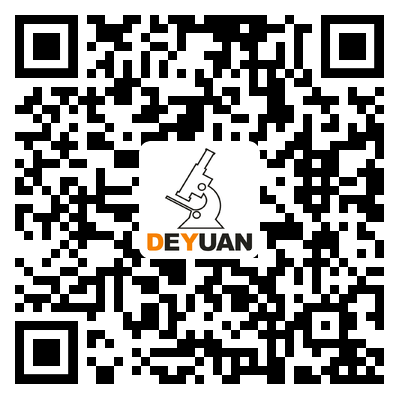Experimental Study on an Extractant Used for Copper Removal from Anode Solution of Nickel Electrolysis (II)
2、 Effect of Extractant on Purification and Copper Removal of Nickel Electrolytic Anode Solution in Chloride Salt System
Using chloroform or sulfonated kerosene as the diluent, prepare the extractant into a solution with a volume fraction of 9-11g/L as the organic phase. Prepare a simulated nickel chloride electrolyte using copper chloride and nickel chloride, with a nickel ion concentration of 60-70g/L and a copper ion concentration of 0.8g/L. Adjust the solution pH to 4-4.5. The extraction conditions: extraction temperature 25 ℃, 1:1 to 1:2 compared to (O/A). Pour the organic and aqueous phases proportionally into a 100ml conical flask and stir for 30 minutes in a constant temperature magnetic stirrer. Afterwards, the separation funnel was placed in a static state for layering to obtain the residual solution (the solution after removing copper from the nickel electrolysis anode) and the loaded organic phase. The loaded organic phase was subjected to stripping with 2mol/L sulfuric acid at a temperature of 25 ℃ and a stripping ratio of (O/A) 5:1. The stripping solution was obtained through primary stripping. Measure the concentration of copper and nickel ions in the solution after copper removal and the solution after stripping using ICP-AES method and calculate the copper nickel stripping rate and the copper nickel mass ratio in the solution after stripping. The copper nickel stripping rate is 100%.
3、 Simulation of the Effect of Extractants on the Purification and Removal of Copper from Nickel Electrolytic Anode Solution in a Chloride Sulfate Mixed System
Using chloroform or sulfonated kerosene as the diluent, prepare the extractant into a solution with a volume fraction of 9-11g/L as the organic phase. Prepare a simulated nickel electrolyte for a chloride sulfate mixed system, with a nickel ion concentration of 70-80g/L, copper ion concentration of 0.8g/L, chloride ion concentration of 75g/L, and sulfate ion concentration of 100g/L. Adjust the aqueous pH to 4.5. The extraction conditions: extraction temperature 25 ℃, 1:1 to 1:2 compared to (O/A). Pour the organic and aqueous phases proportionally into a 100ml conical flask and stir magnetically for 30 minutes in a constant temperature magnetic stirrer. Afterwards, the separation funnel was placed in a static state for layering to obtain the residual solution (the solution after removing copper from the nickel electrolysis anode) and the loaded organic phase. The loaded organic phase was subjected to stripping with 2mol/L sulfuric acid at a temperature of 25 ℃ and a stripping ratio of (O/A) 5:1. The stripping solution was obtained through primary stripping. Measure the concentration of copper and nickel ions in the solution after copper removal and the solution after stripping using ICP-AES method and calculate the copper nickel stripping rate and the copper nickel mass ratio in the solution after stripping. The copper nickel stripping rate is 100%.
Our major products of metal extractants and usage as below:
- P204 (D2EHPA or HDEHP) This is used for first step to remove impurity for laterite nickel ore.
- DY319 high efficiency nickel cobalt co-extraction extractant, can take out nickel and cobalt together from nickel laterite ore or Lithium battery electrolyte. This is second step for laterite nickel ore.
- DZ272 Nickel cobalt separation extractant, it can take cobalt out from nickel cobalt solution, then leave pure nickel. This is third step for laterite nickel ore.
- DY377 efficient nickel and diamond separation extractant.
- DY366 new advanced nickel cobalt extractant.
- DZ988N/DZ973N/DZ902 copper solvent extraction reagent.




